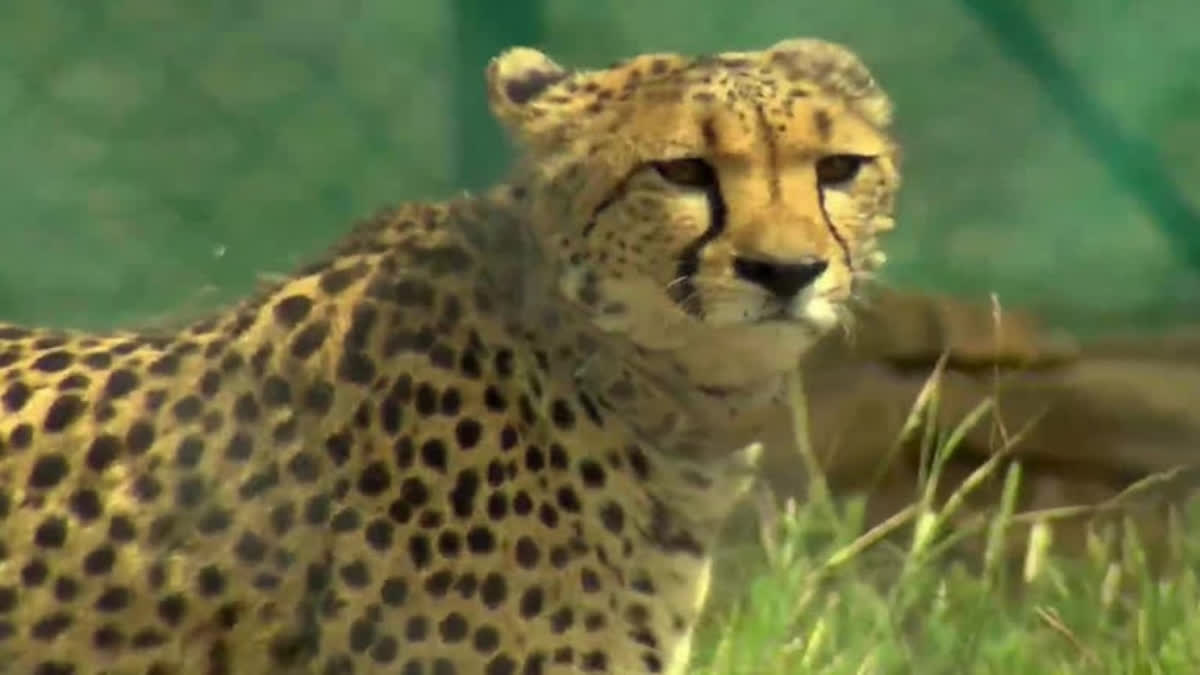New Delhi: Five cheetahs -- three females and two males -- will be released from the acclimatisation camps into free-ranging conditions in Madhya Pradesh's Kuno National Park (KNP) before the onset of the monsoon in June, the Union Environment Ministry said on Monday. It also said the cheetahs will be allowed to move out of KNP and will not necessarily be "recaptured unless they venture into areas where they are in significant danger".
So far, four of the eight cheetahs brought from Namibia have been released from the fenced acclimatisation camps into free-ranging conditions in KNP. "Five more cheetahs (three females and two males) will be released from the acclimatisation camps into free-roaming conditions in KNP before the onset of the monsoon rains in June," it said in a statement.
The decision was taken after a team of experts reviewed the current status of the "Project Cheetah" on the directions of the National Tiger Conservation Authority (NTCA). They expert team said all the cheetahs were in good physical condition, making kills at regular intervals and displaying natural behaviours. Cheetahs were chosen for release based on their behavioural characteristics and approachability by the monitoring teams.
The rest of the cheetahs will remain in the acclimatisation camps for the duration of the monsoon season. "Certain internal gates will be left open to allow these cheetahs to utilise more space and for interactions between specific males and females to take place," the ministry said. The situation will be reviewed after the monsoon season and further releases into KNP or surrounding areas will be done in a planned manner as per the Cheetah Conservation Action Plan to establish meta population, it said.
Of the four cheetahs that have already been released into free-ranging conditions, two (Gaurav and Shaurya) have stayed within the park and have not shown any interest in exploring the landscape beyond the borders of the park, according to the statement. A female cheetah named Aasha has made two exploratory excursions to the east of KNP beyond the buffer zone but has remained within the broader Kuno landscape and has not ventured into human-dominated areas.
Another male (Pawan) explored areas well beyond the boundaries of the park on two occasions, venturing into farmland near the border with Uttar Pradesh during his second excursion. He was darted by the veterinary team and returned to an acclimatization camp in KNP. The ministry said cheetahs, like other large carnivores, are known to range widely during the initial few months after being reintroduced into unfamiliar open systems.
"These movements are unpredictable and depend on many factors. After several months, the cheetahs should establish their own communication networks and settle down in relatively fixed home ranges. "It is important that individual cheetahs do not become totally isolated from the reintroduced group during this phase as they will then not participate in breeding and will thus be genetically isolated," it said.
Their degree of isolation will be assessed once they settle down and appropriate action will be taken to enhance their connectivity to the group. Several wildlife experts have said that Project Cheetah overestimated the carrying capacity of KNP, and linked it to the incidents of Pavan straying out of the national park.
The expert team said it is impossible to determine the precise carrying capacity of cheetah in KNP until they have properly established their home ranges and that the home ranges of cheetahs can overlap substantially depending on the prey density and several other factors. "While many have made predictions about the anticipated carrying capacity of cheetahs in KNP based on other ecosystems in Namibia and East Africa, the actual number of animals that the reserve can accommodate can only be assessed after the animals are released and have established home ranges," it said.
"Cheetah home-range sizes and population densities vary tremendously for different cheetah populations in Africa and for obvious reasons, we do not have useful spatial ecology data for cheetahs in India yet," the ministry said. Under the ambitious Cheetah reintroduction programme, Prime Minister Narendra Modi released the first batch of eight spotted felines -- five females and three males -- from Namibia into a quarantine enclosure at Kuno in Madhya Pradesh on his 72nd birthday on September 17 last year.
In a second such translocation, 12 cheetahs were flown in from South Africa and released into Kuno on February 18. One of the Namibian cheetahs, Sasha, died due to a kidney-related ailment in March. Another cheetah, Uday, from South Africa died on April 13. On the death of the two cheetahs, the ministry said chronic renal failure is a common problem in captive cheetahs and many other captive felid species, but is not infectious and cannot be transmitted from one animal to another.
An initial examination revealed Uday had most likely died of terminal cardio-pulmonary failure. Failure of the heart and lungs is common in the terminal stages of many conditions and does not provide much information about the underlying cause of the problem, it said. (PTI)



